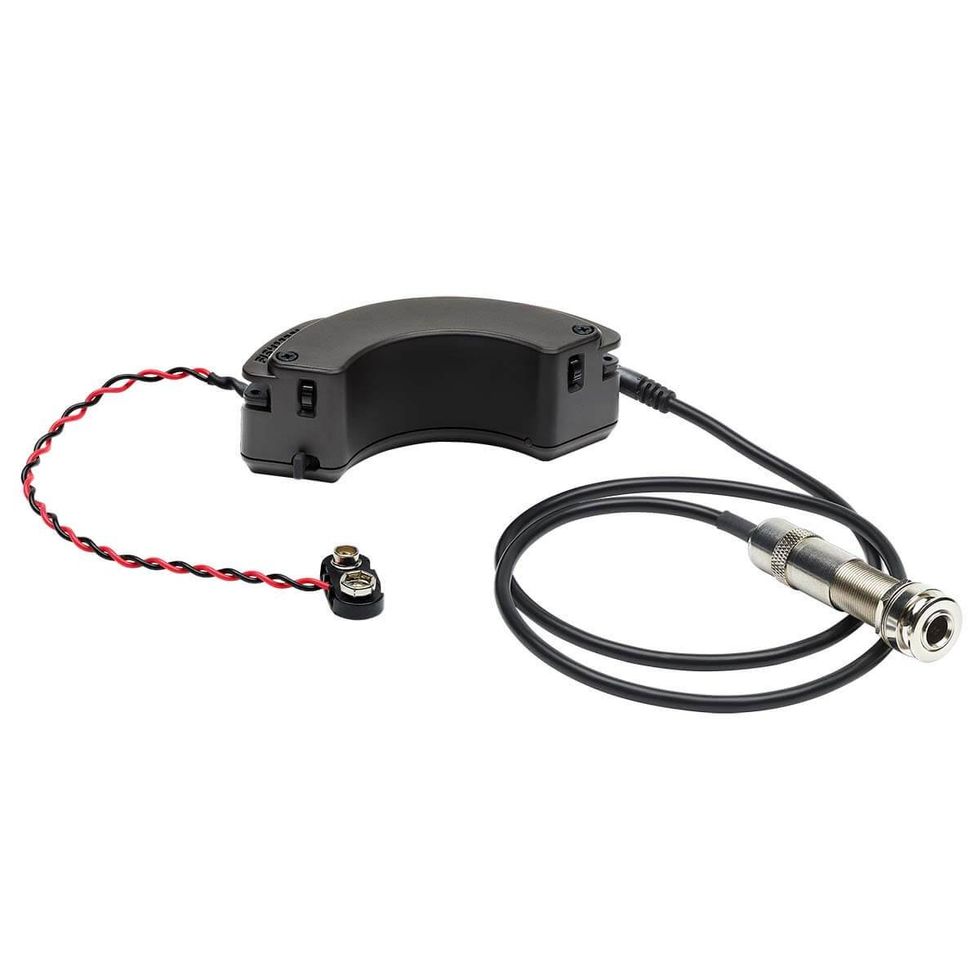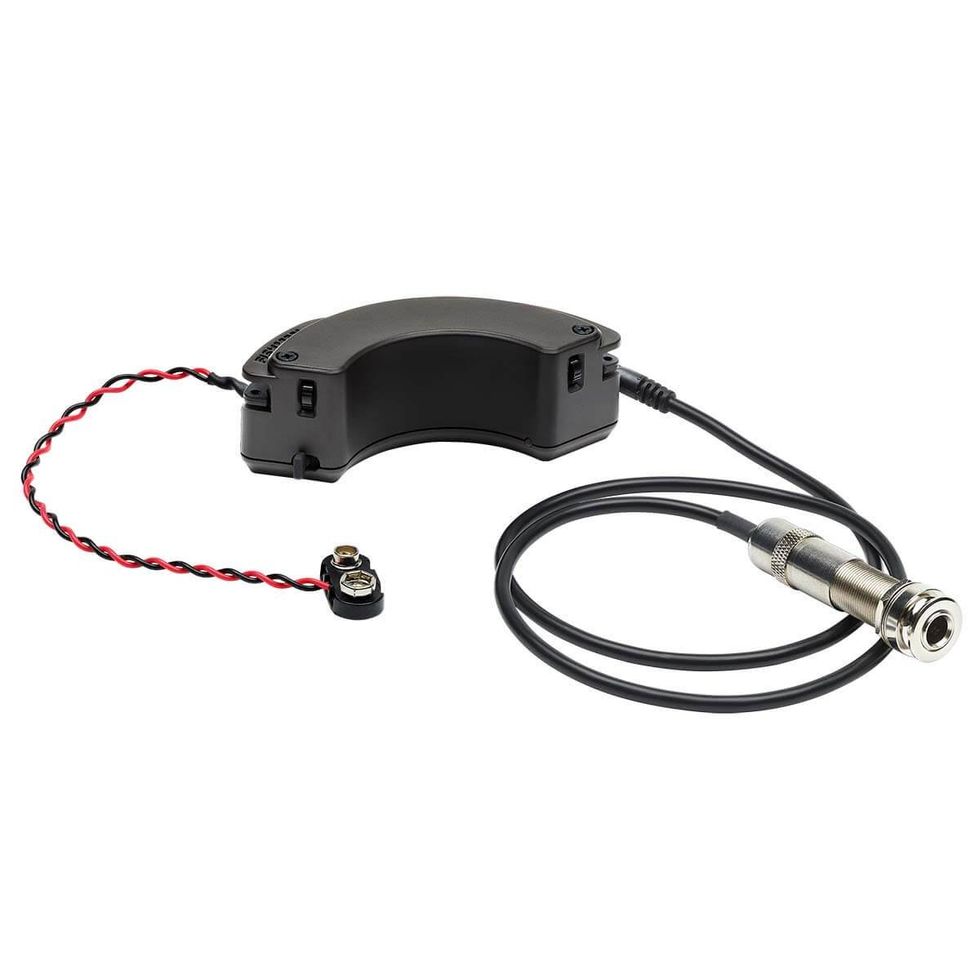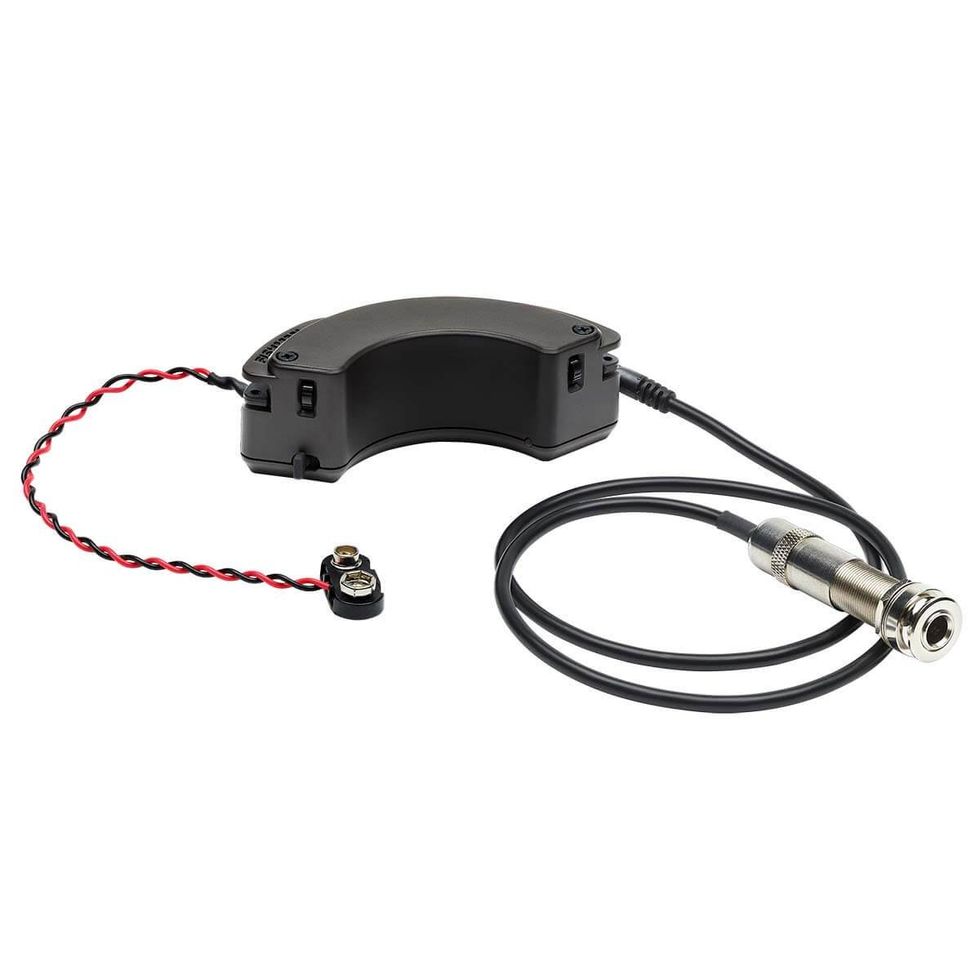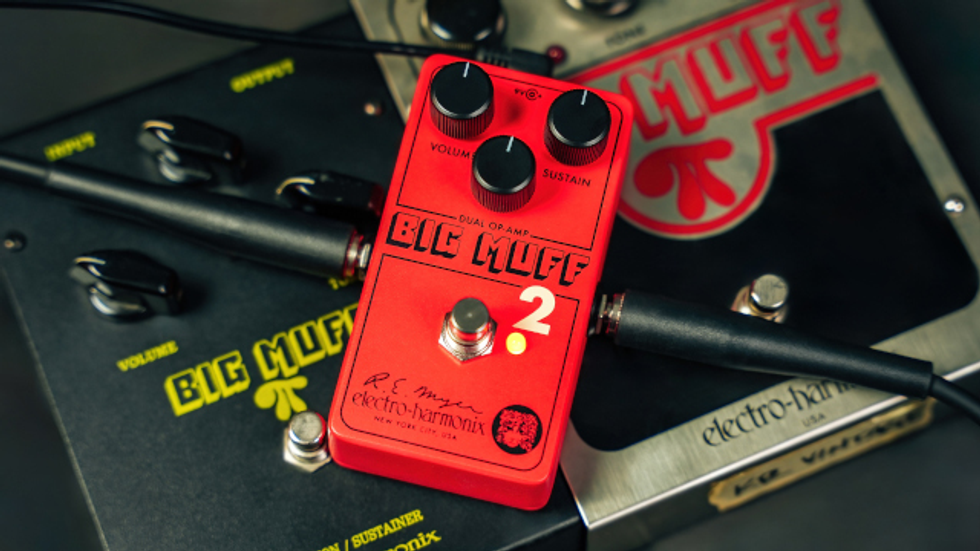Attention class, the subject of today’s lecture is the “Map” guitar manufactured by Eastwood Guitars.
In the Beginning
Homo Sapiens created the electric guitar by placing a coil-wound electromagnet in proximity to the strings of an acoustic guitar and running the signal to an amplifying device. And it was good.
Many years passed before the winds of change began to blow. The double big bang of the advent of the solid body guitar and the tumultuous storm of rock n’ roll’s arrival in the world of young humans kicked the demand for, and the production of, this new genus of guitar into hyperdrive. Thus were born into the world many new species; some very distinct from those of the past.
The Good the Bad, the Ugly
Those who could afford the freight played the guitars of their heroes: Fender, Gibson, Guild, or Gretsch. Others -- neophytes, and the less heeled -- perused mail-order catalogs, or haunted the music stores or department stores of their hometowns, scooping up cool bargain guitars by such names as Kay, Harmony, Teisco, Eko, Guyatone, National, Supro, Airline, Silvertone, Danelectro and many others from here and abroad.
Some were good and launched many a guitar career, some were just plain bad and discouraged many a would-be player, and some were just too grotesque to be taken seriously by the guitar public.
Invasion of the Clones
It didn’t take long for the established, known-name manufacturers to hone in on the entry level thing. Lo, and whereupon were born the “Epiphone” line of Gibson, the “Squier” line of Fender along with many new lines of copies, both domestic and Asian.
Soon, the old “mail order specials” found themselves mired in the “tarpits” of pawn shop windows, to be dissected and collected by a mere handful of guitar aficionados. Meanwhile, some disenchantment with the “same old” standard designs began to spread within mainstream guitardom, and it wasn’t long before these “pawnshop dinosaurs” breathed new life in the hands of dedicated players.
| Want web exclusives like this delivered to your inbox weekly? Sign up for our weekly insider updates. (opens in new window) |
This trend did not go unnoticed by some individuals with an eye to the future; one of those being Mike Robinson, president of Eastwood Guitars. Mike picked the best of those left behind, fixed past issues with playability and reliability and brought them to the now adoring throngs at prices far below the soaring cost of the highly sought originals.
He did all this while maintaining the vintage vibe of the original designs; going so far as to use the original brand name of guitars sold by the now defunct Montgomery Ward and Co - "Airline." There are also several model names under the “Eastwood” brand.
I hope you don’t mind the history. It is intended for those still in awe of the sudden explosion of retro cool designs on the market. I have been playing and dissecting guitars for over 50 years,so I’ve had the chance to see it all unfold; and in fact still own a ’64 Airline Red Jet thin hollow body and also held and played many other originals, including the review guitar which started its evolutionary path as a “National” branded “Newport.” One of my good friends in high school owned it, and I played it many times. The guitar is now labeled under the Airline brand as the "Map” guitar, possibly a mind-altered view of the United States outline.
Anatomy
| Like the look but play bass? Check out our Eastwood Airline Map bass review here. |
The specimen weighs in at 8.2 pounds and has a sea foam green body and bolt-on neck. The headstock is painted white with a raised painted metal “Airline” logo set at a jaunty angle. The tone-chambered Mahogany body and Maple neck are bound in white plastic and the headstock in black plastic. The guitar top is “raised” by a cove rout around its entire perimeter. There is a white clear plastic pickguard with the rear surface painted white and containing an “Art Deco” fine line design. The clear-coated paint is smoothly applied to a smoothly prepared surface.
The fingerboard sports a “zero fret,” relegating the function of the nut to that of string guide. There are 22 playing frets set in a rosewood board with a straight (non-compound) radius of 12 inches. There are nicely inlaid “mother of toilet seat” (pearloid) position markers in the usual configuration, adding to the vintage vibe. The frets are nicely dressed and polished with smoothly-rounded ends.
There is some file artifact in the neck binding from the use of triangular fret end files without the downfacing points ground flat. A fast and hard glissando from fret 1 to 22 is comfortable and leaves no skin behind. There appears to be a hairline crack between the neck and the fingerboard at the end corner under the bass strings, but it doesn''t seem to affect the sound or playability.
Hardware
Starting at the headstock, the tuning machines are a somewhat heavy cast version of the venerable Grover Rotomatic. They were fairly smooth with one outlier that had a definite metal-on-metal feel to the gear mesh. There are two “Hot – 10” Eastwood pickups which are an attempt to create the sound of the original single coils in a humbucker configuration. The pickup switch labeled “tone switch” (in another vintage tip of the hat) is a typical 3-way blade switch like you''d see oin a Telecaster. Another quality control issue arose from the fact that of the two screws that mount the switch only one was firmly into the wood, the other just grazed the edge of the routed cavity. This could easily be remedied by using a simple jig to locate the first hole and the switch to locate the second.
The vibrato tailpiece is a licensed Bigsby replica and the bridge is funky. It incorporates the adjustability of the “adjustomatic” with mini roller saddles a la Schaller Roller Bridge. The tailpiece appears well made, incorporating ball or needle bearings and handles smoothly. There are three cast metal “hat” knobs, one for each pickup volume and the last in line for master tone. It comes strung with D’Addario 10’s -- a nice touch.
Body Cavity Search
First, a few measurements: The fingerboard on my review model measures 1 23/32” at the nut and 2 1/4” at the distal end. The scale length measures 24&3/4”.
The control cavities are nicely routed. The vol/tone cavity has some shielding and reveals 3 mini-pots expertly soldered. All signal carrying wire is shielded. The pickups have an interesting “quick connect” plug for fast pickup changes. The neck pocket is cleanly-routed, but there are two neck shims at the rear, each made of cloth backed belt sanding abrasive. The neck is fastened with four beefy wood screw and finish washers. The two proximal screws are very close to the end of the neck.
Ergonomics
“The Map” is a well-balanced axe which fits comfortably against the body. The accurately-rounded medium slim neck cradles well in the hand -- even for those of us with short fingers. A slight tilt back of the neck and bit more of the headstock add to the comfort level.
The factory setup is nicely done, with action low enough for quick fretting and high enough for rattle-proof slide work. The intonation is more than acceptable up and down the fretboard. A slight limitation of adjustment range in the bridge saddles has the bridge angled slightly forward, which causes a slight angulation to the rollers on the saddles. No big deal; a tiny drop of oil now and again should keep ‘em rollin’.
The zero fret helps the strings stay in tune after vibrato usage, and a wipe of oil there would also be of benefit. The Bigsby works fine and return to intonation is good, as is “tuning up”.
Access to the control knobs is good except when the vibrato arm is swung into “twanging” position. Coordinated use of the vibrato and volume controls, as in faux pedal steel licks, is tricky at best.
Make My Day
I played this sweet little jade gem acoustically for several hours before plugging in. Those tone chambers really work and the all wood construction gives a nice, round acoustic sound. I remember playing my friend’s original Newport with its fiberglass and polyester resin body and thinking how dead it felt, especially compared to the ’58 Gretsch Anniversery Model (also green) I was playing at the time. This guitar feels alive in my hands.
After the strings were sufficiently worked so as to remain in tune, I plugged in. At first I went with my gig amp, a David Allen Old Flame - 40 watts, 6L6s. On a clean setting, and picking lightly, my little green friend gave off a warm tone with just a slight edge using the neck pickup. The bridge pickup was a bit thin with a bit of bite. The mid switch position had a nice bit of quack with a grainy aftertaste. Bearing down a bit with a stiff (1.5mm) pick produced a nice, warm distorted vintage grit on the neck pickup and a searing bite on the bridge pickup.
Increasing the gain jacked up both the highs and lows, producing good sustain with plenty of pick attack and a meaty midrange. I then switched to my Clark Beaufort, which is a high-end replica of a tweed Deluxe. It took a bit of tweaking of the interactive volumes to get that vintage Chicago sound. Think Jimmy Rogers with the Muddy Waters band.
Dusting off the SF Champ produced super-fine, naturally warm 6V6 power tube distortion with the volume on 8. There was still a nice, but muted, bite on top.
The most fun was with my ’83 Boogie .22 Cal Studio with an EV-12. Very nice clean channel sounds with plenty of top and bottom gave way to drive channel ambrosia with settings that mimicked modern blues tones all the way to full overtone opera with major “junk in da trunk” bottom.
My hands felt at home with the mechanics of playing. The bridge position offered good palm muting opportunities, the whammy bar came up in my hand in a fairly natural position, but could always be bent slightly to taste. The neck felt smooth and quick with just the right distance between strings. The volumes and tone had a nice taper, providing gradual adjustments without sudden surprises, and the “tone” switch location, a bit awkward at first, started to feel pretty comfortable. Bending was comfy over the smoothly polished frets, though bending always feels a bit different to me with a vibrato tailpiece.
In a gig setting, the Map was a hit. There were nods of approval all around.
The Final Mojo
It probably all boils down to style. You either love it or you hate it; or as Eastwood would probably state it: you either “get it” or you don’t.
This guitar’s style speaks to me, so I guess I get it. It plays and sounds as good as any other Korean-made instrument that streets for less than a grand, and in these times, that is saying something very positive.








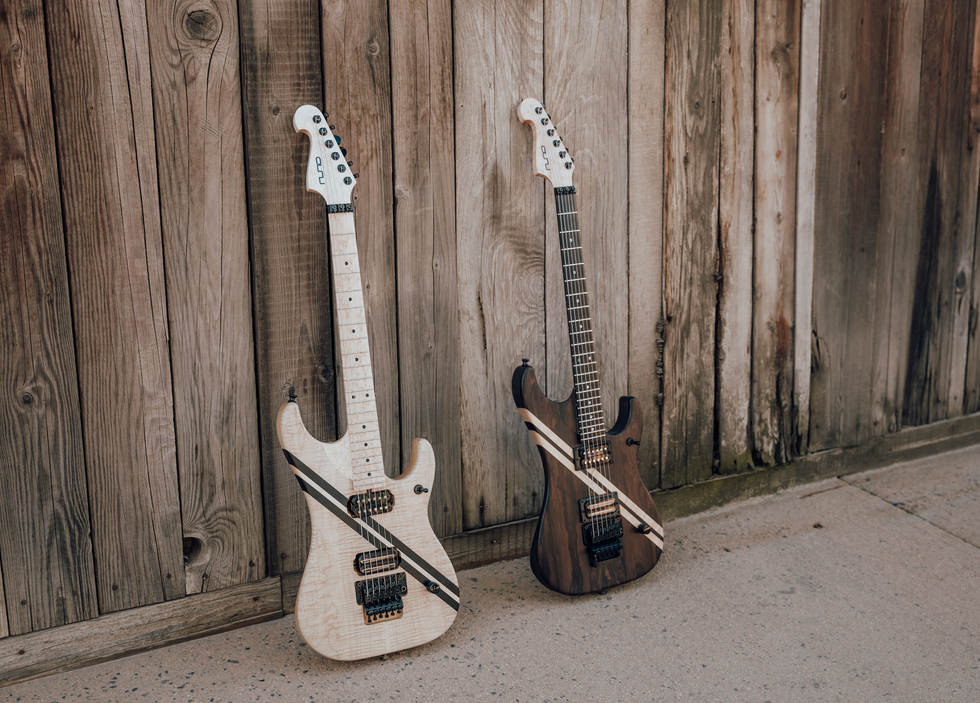
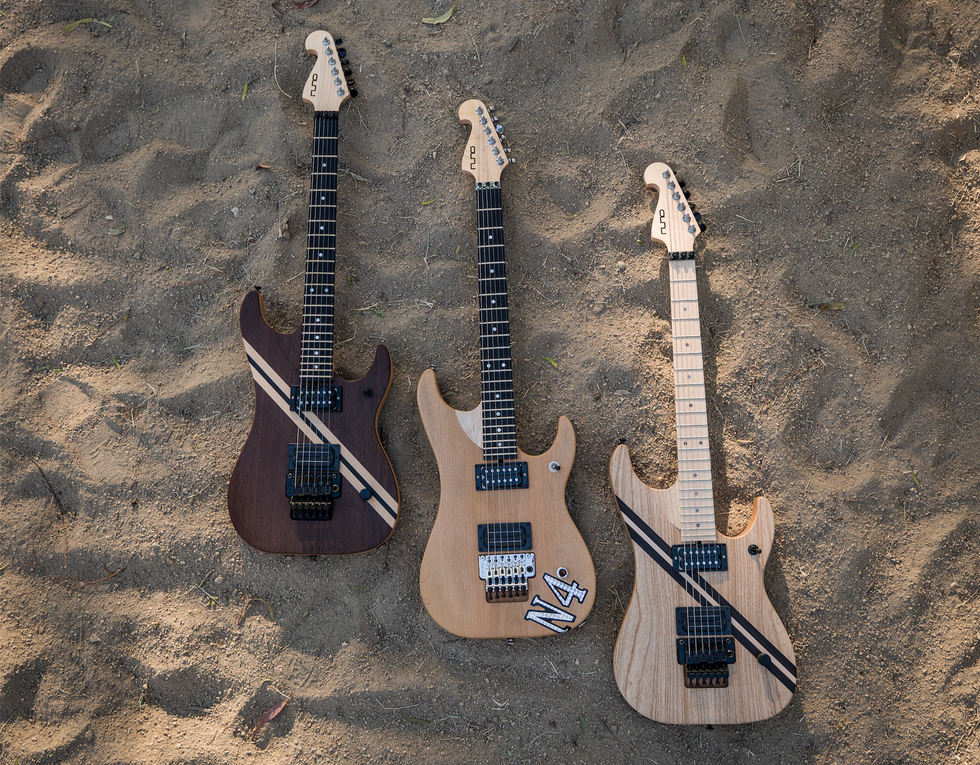
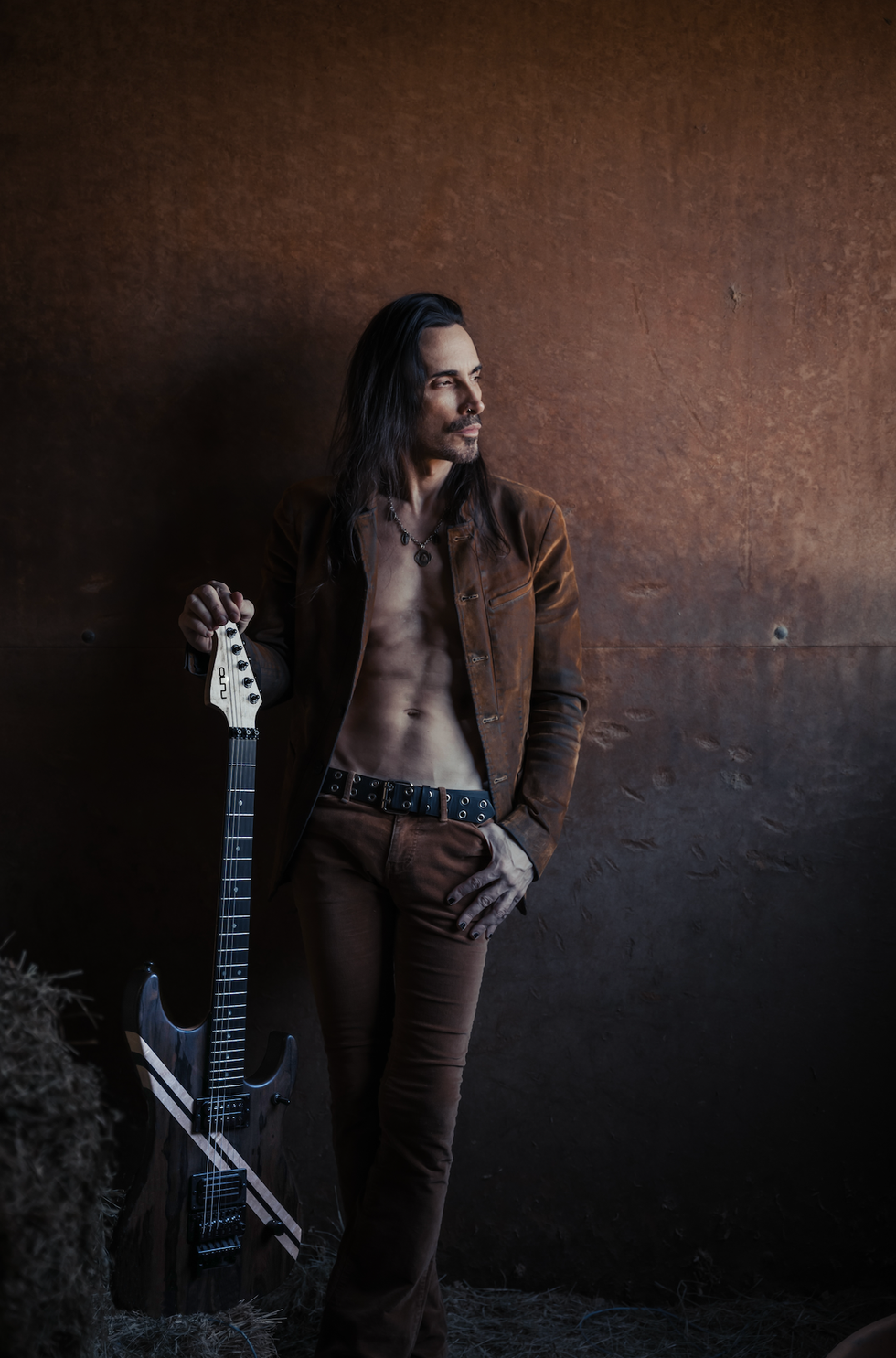

![Rig Rundown: Russian Circles’ Mike Sullivan [2025]](https://www.premierguitar.com/media-library/youtube.jpg?id=62303631&width=1245&height=700&quality=70&coordinates=0%2C0%2C0%2C0)





